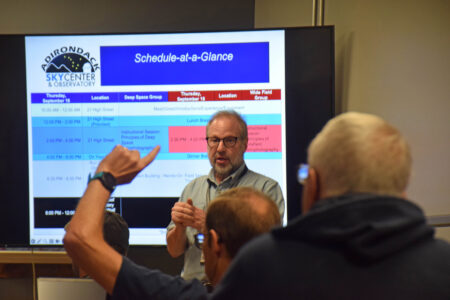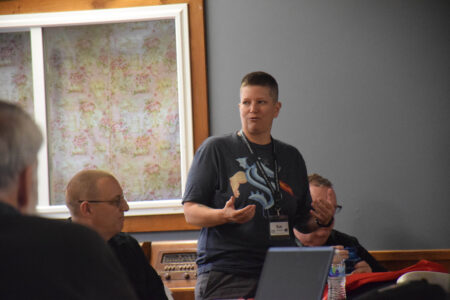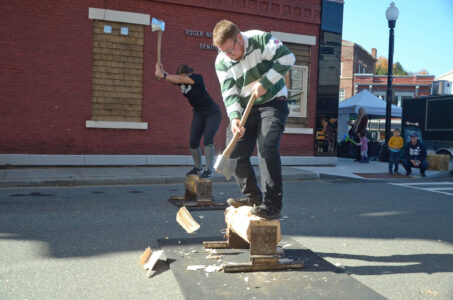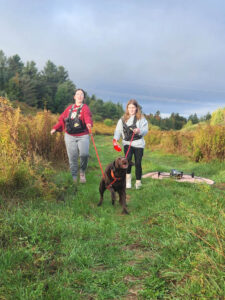Capturing the cosmos
Astrophotography Conference returns to Tupper Lake
- Miguel Damien introduces himself at the 2025 Adirondack Sky Center & Observatory’s Astrophotography Conference in Tupper Lake on Thursday. A first-time participant, Miguel and his wife, Eve (seated in front of him) learned about this when they met ASCO President Seth McGowan at another conference, who put it on their radar. (Enterprise photo — Chris Gaige)
- Adirondack Sky Center & Observatory President Seth McGowan welcomes participants and answers questions at the beginning of the 2025 Astrophotography Conference in Tupper Lake on Thursday. (Enterprise photo — Chris Gaige)
- Sue Whitcomb of Saranac Lake speaks at the 2025 Astrophotography Conference in Tupper Lake on Thursday. (Enterprise photo — Chris Gaige)
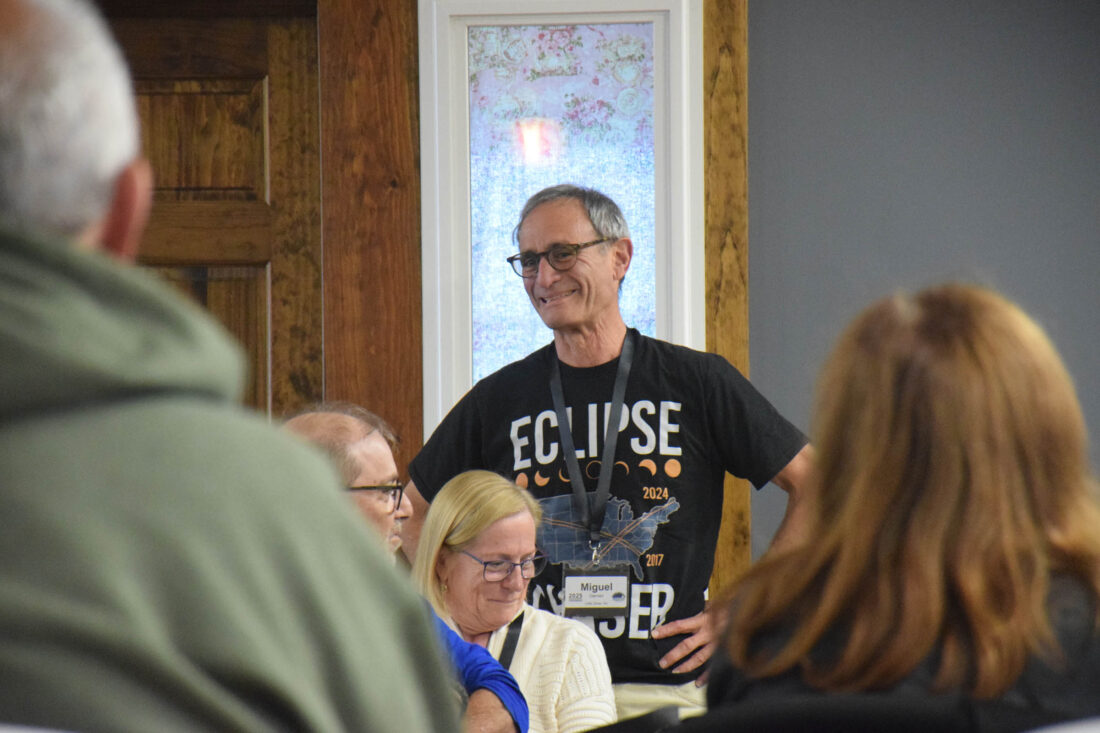
Miguel Damien introduces himself at the 2025 Adirondack Sky Center & Observatory’s Astrophotography Conference in Tupper Lake on Thursday. A first-time participant, Miguel and his wife, Eve (seated in front of him) learned about this when they met ASCO President Seth McGowan at another conference, who put it on their radar. (Enterprise photo — Chris Gaige)
TUPPER LAKE — Twenty-five outer space imaging enthusiasts convened here to take part in the Adirondack Sky Center & Observatory’s annual Astrophotography Conference.
The conference, which dates back to 2017, kicked off on Thursday and will run through Sunday. Registration was required in advance and is geared toward those with some prior experience with astrophotography. Participants came from near and far, from Saranac Lake to Florida to Seattle.
Five Sky Center instructors provide instruction throughout the event, helping participants become better photographers, whether it’s assisting with choosing the right gear for specific situations, getting the right setup, troubleshooting equipment issues and image processing.
The conference is capped at 25 participants so that the instructors can spend plenty of time with each person to ensure they leave with an improved skill set, according to Sky Center President Seth McGowan, who is also one of the instructors.
“This is a conference where we want people to be comfortable asking questions,” he said. “The difference with this conference is that it is all hands-on.”
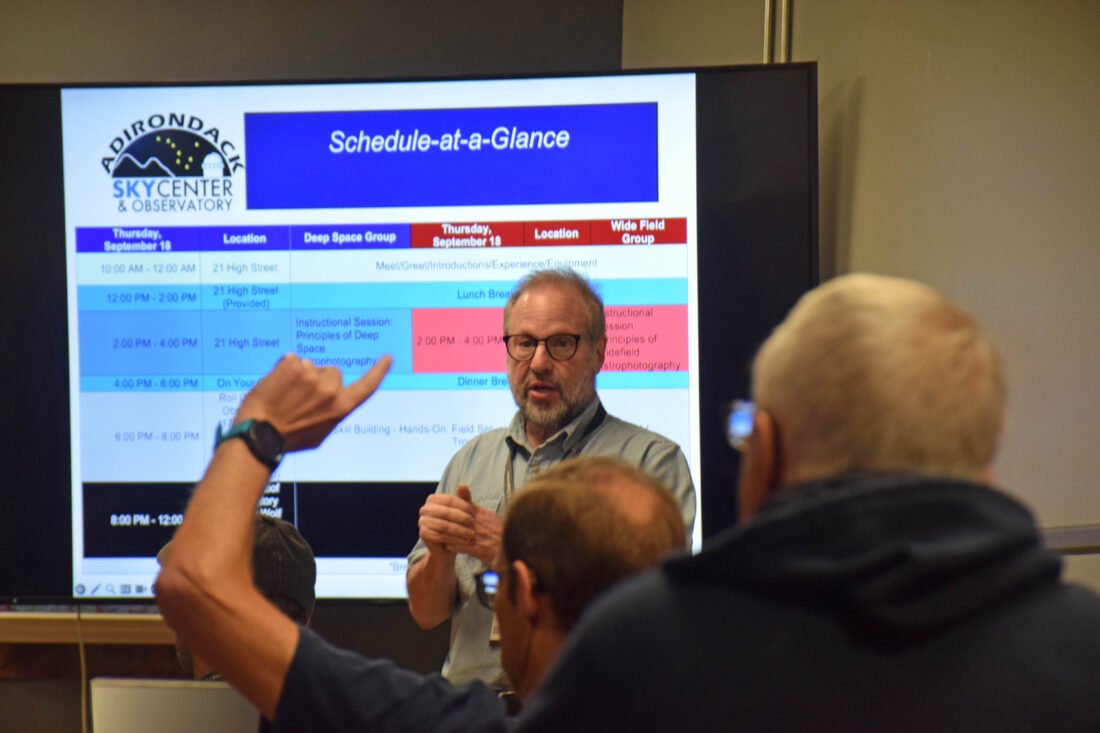
Adirondack Sky Center & Observatory President Seth McGowan welcomes participants and answers questions at the beginning of the 2025 Astrophotography Conference in Tupper Lake on Thursday. (Enterprise photo — Chris Gaige)
Participants bring their own equipment. McGowan said this allows participants to directly apply their skills when they go home. The instructors are experienced with a wide array of equipment and setups, and are proficient with the various equipment participants show up with.
The original inspiration for the conference came from McGowan’s own experience growing up, and a drive to improve on that.
“When I was starting in astrophotography, I would be out in the middle of a field freezing my hands trying to figure out why something wasn’t working,” he said. “I wished that there was somebody standing right next to me who knew — and this is the creation from that. This is exactly what the purpose of this is.”
The conference coincides with the new moon each September or October. The lack of moonlight provides an ideal dark backdrop, provided the skies are clear, for astrophotography. The event is broken down into two concurrent sessions: deep space and widefield. They’re not exactly mutually exclusive, nor are they precise definitions. Generally, deep space photography refers to the photographer focusing in on a specific celestial object, such as a nebula, while widefield tends to use a relatively lower telescope magnification to capture a larger portion of the night sky, such as the Milky Way.
There’s a mix of new and returning astrophotographers at the conference. Husband-and-wife Miguel and Eve Damien are first time participants. The couple lives in New Jersey and visits the Adirondacks frequently.
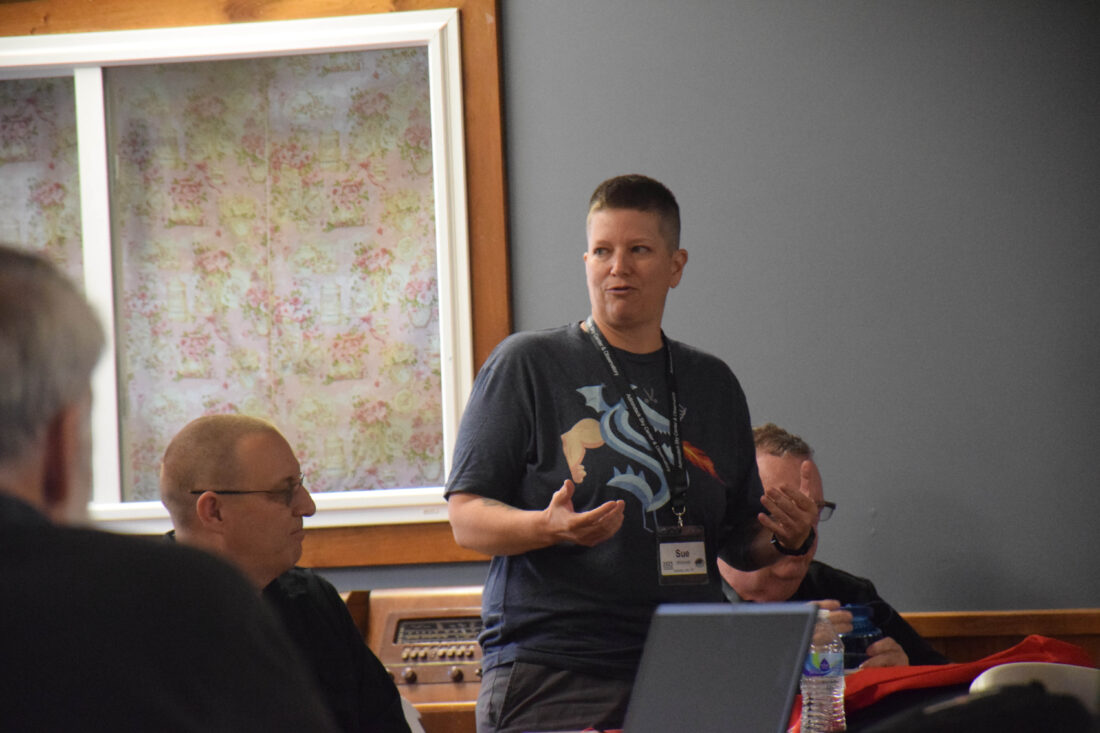
Sue Whitcomb of Saranac Lake speaks at the 2025 Astrophotography Conference in Tupper Lake on Thursday. (Enterprise photo — Chris Gaige)
Professionally, Miguel is a physician, but astronomy has always appealed to him and is one of his biggest hobbies. He recently purchased several new pieces of equipment for space viewing and imaging. The Damiens first heard about this conference when they met McGowan at another astronomy event earlier this year. It didn’t take long for the Damiens to sign up.
“He reeled us in,” Miguel said. “We thought, ‘Wow, this would be great to start taking pictures and really learning how to do it.'”
Eve added that when tinkering around with some of the new equipment at home, there have been various snags and technical difficulties. They were looking forward to the real-time troubleshooting help from the instructors. Miguel said it took three days to get the necessary software programs installed ahead of the conference.
“But I’m all done,” he said. “I’ve got two laptops, both programs are set, I’m ready to run.”
While routinely dark skies are intuitive — or perhaps even an afterthought — for Adirondack residents, McGowan emphasized how rare these are for the eastern U.S.
“Where there’s population, there’s lights,” he said. “The Adirondacks are 6 million acres but not a lot of people. … People seek out dark skies for astro imaging because it’s almost impossible to do in a light-polluted area. We’re among the darkest skies east of the Mississippi, so we’re a target area for people to come.”
The Adirondack skies are a precious resource, both for scientific exploration and as an economic driver from the tourism dollars that come with people seeking out pristine dark skies.
“These people are staying in Tupper Lake,” he said. “They’re staying at the motels. They’re eating at whatever restaurants are open. They’re experiencing Tupper Lake.”
He said many conference goers end up returning to the village for leisure and additional space imaging, especially in the relatively less-busy winter season, when the atmosphere tends to be clearer, making for better astrophotography.
The Sky Center unveiled a new astrophotography exhibit at its 68 Park St. Astronomy Hub. That story can be found at tinyurl.com/2s3mppce.


